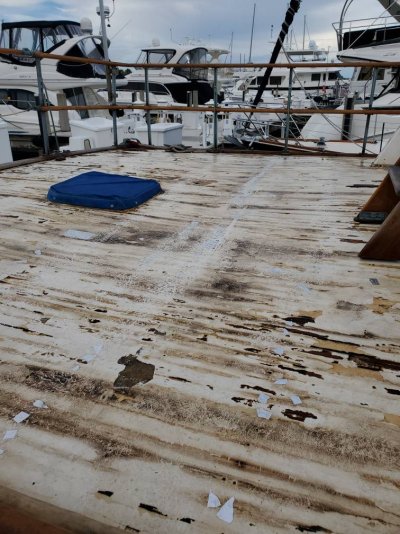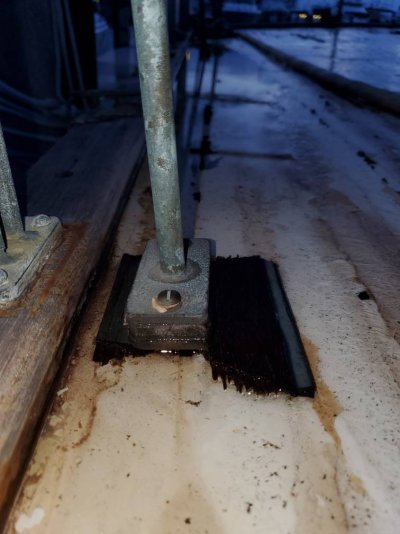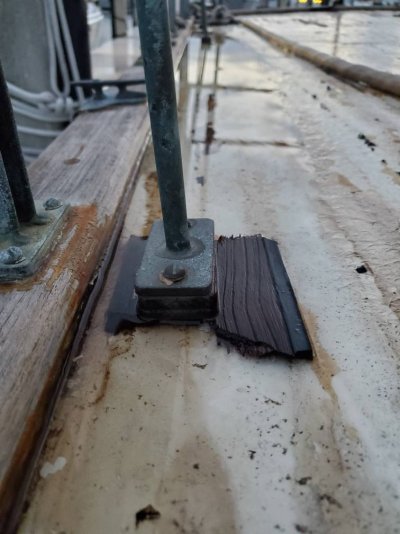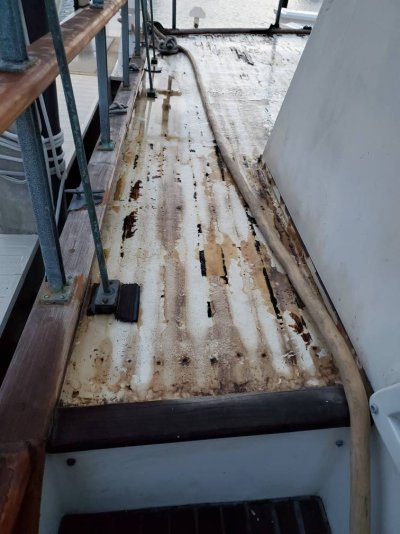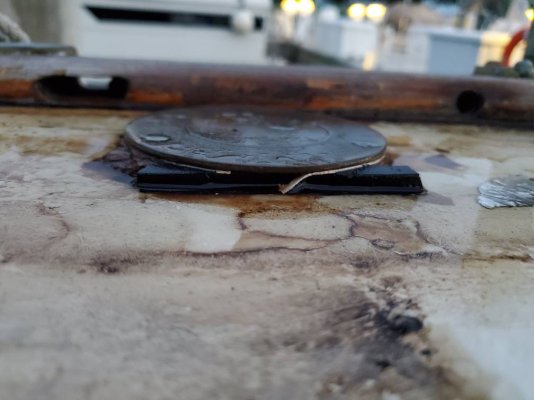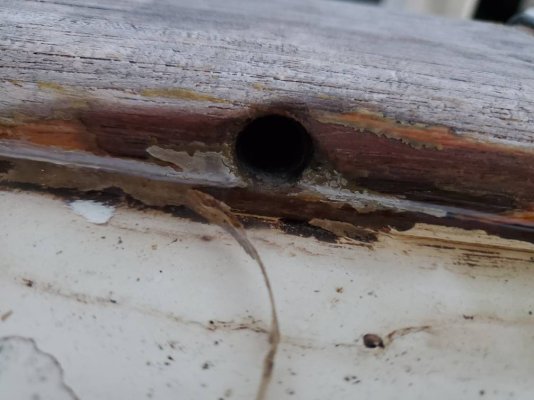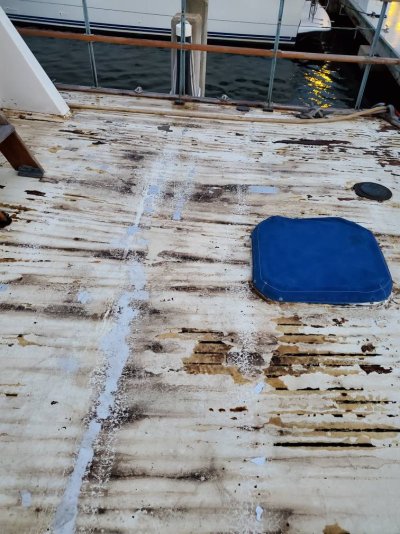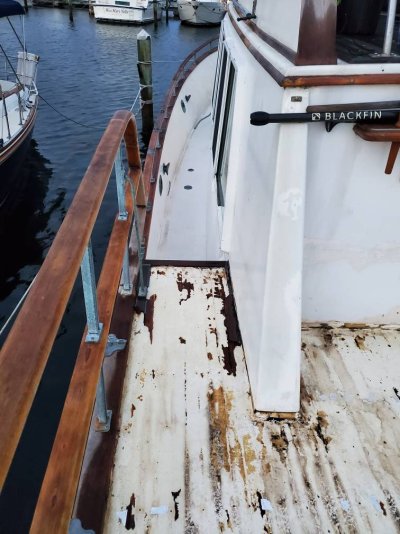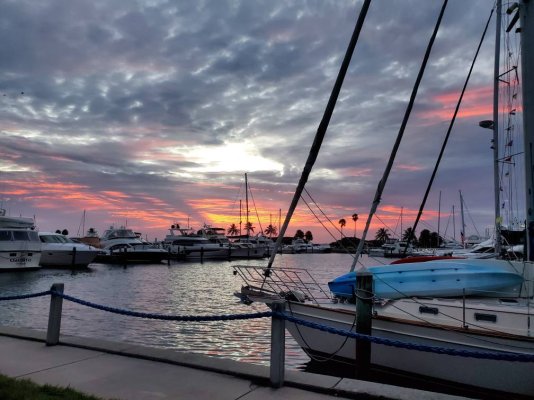TrawlerTribe
Veteran Member
- Joined
- Sep 2, 2019
- Messages
- 36
- Location
- USA
- Vessel Name
- Gratitude
- Vessel Make
- 1982- 44ft Island Gypsy Trawler
We finally got to pulling up our rear teak. Our aft Stateroom has has leaks in specific areas since purchasing the boat and now I see why.
A previous owner pulled up the old teak years ago had teak glued back down with no screws. The adhesive they used was starting to fail so I decided to pull it up. I got it up in a day and found a lot of the old screw holes were either never filled or whatever they filled with came out. I cut a small section of the glass back to the core to check it. Its Marine Ply that was moist but hard as a rock. I expected to find Balsa from an 1982 Taiwanese boat so I'm wondering if the core was replaced w Marine ply when the teak was removed and glued back?
I was planning on installing a new layer of Polyester Resin/Chopped strand to reinforce what is there and waterproof the deck, paint w non skid for now. Maybe install synthetic teak later. We just want to stop the leaks and clean up for now. There is a strange layer of white chopped strand under the teak. I've never seen white fiberglass. You can see the translucent looking glass under this layer. I'm wondering if this is Epoxy that was put down when teak was removed but it does have screw holes in it which doesn't make sense with the previous teak glued down. Now I'm wondering if I should use Polyester w chopped strand or Epoxy and a different laminate fabric. I've read the Chopped strand is not the best to use with Epoxy and Polyester does not adhere well with Epoxy.
Planned on cleaning it up more this weekend and doing more prep.
Any thoughts?View attachment 105292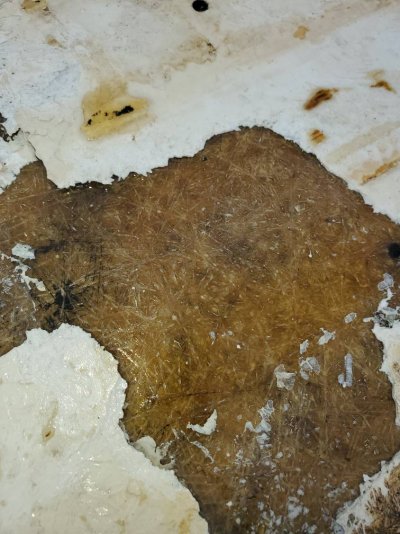

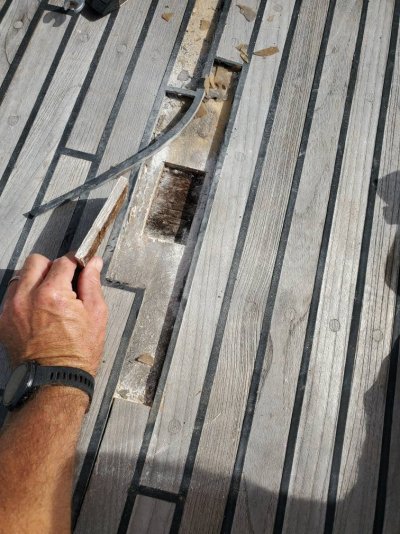
A previous owner pulled up the old teak years ago had teak glued back down with no screws. The adhesive they used was starting to fail so I decided to pull it up. I got it up in a day and found a lot of the old screw holes were either never filled or whatever they filled with came out. I cut a small section of the glass back to the core to check it. Its Marine Ply that was moist but hard as a rock. I expected to find Balsa from an 1982 Taiwanese boat so I'm wondering if the core was replaced w Marine ply when the teak was removed and glued back?
I was planning on installing a new layer of Polyester Resin/Chopped strand to reinforce what is there and waterproof the deck, paint w non skid for now. Maybe install synthetic teak later. We just want to stop the leaks and clean up for now. There is a strange layer of white chopped strand under the teak. I've never seen white fiberglass. You can see the translucent looking glass under this layer. I'm wondering if this is Epoxy that was put down when teak was removed but it does have screw holes in it which doesn't make sense with the previous teak glued down. Now I'm wondering if I should use Polyester w chopped strand or Epoxy and a different laminate fabric. I've read the Chopped strand is not the best to use with Epoxy and Polyester does not adhere well with Epoxy.
Planned on cleaning it up more this weekend and doing more prep.
Any thoughts?View attachment 105292




